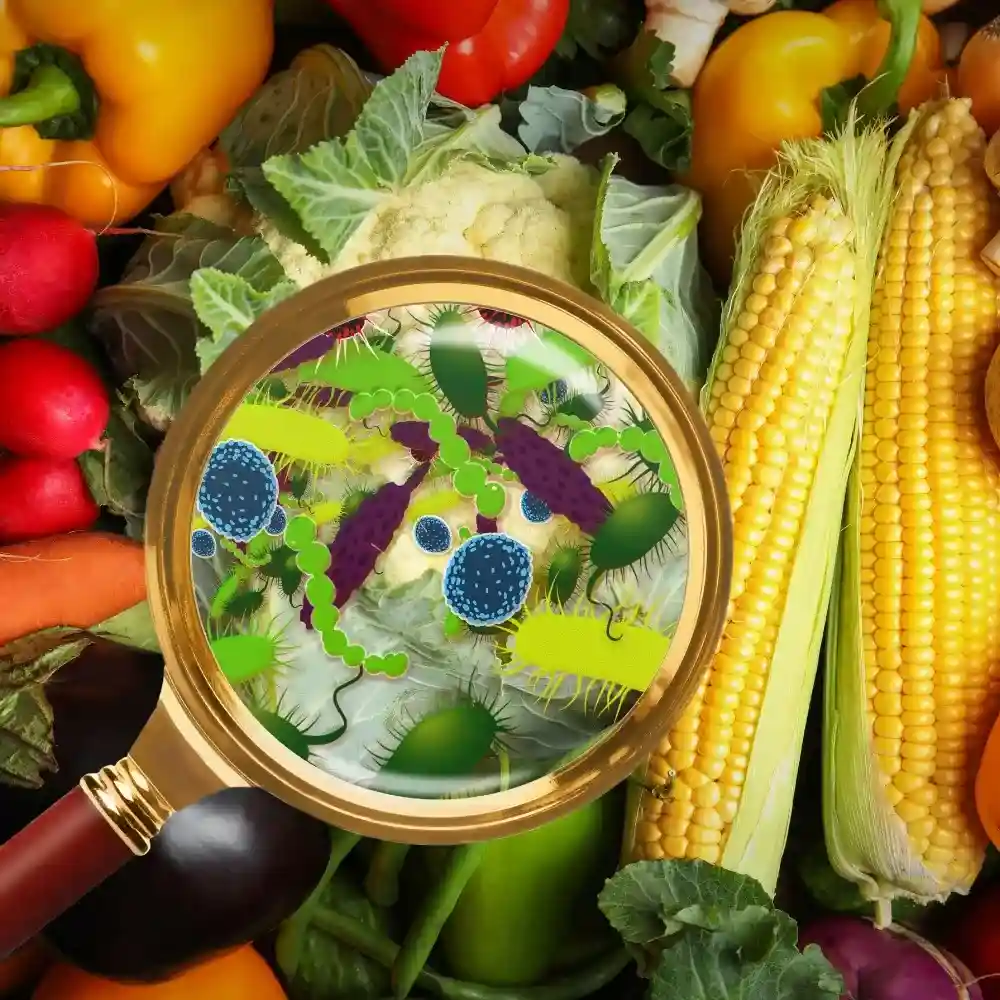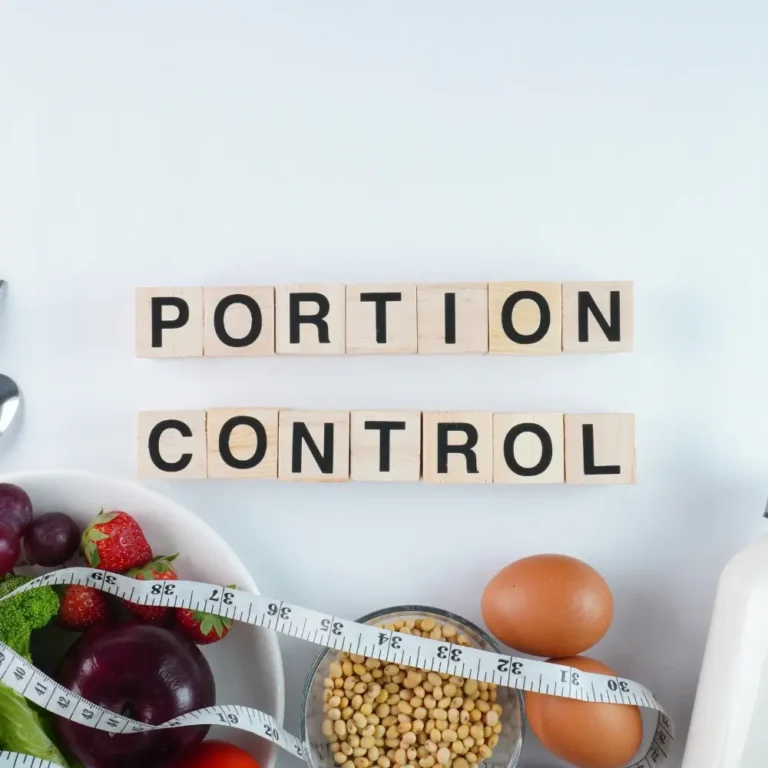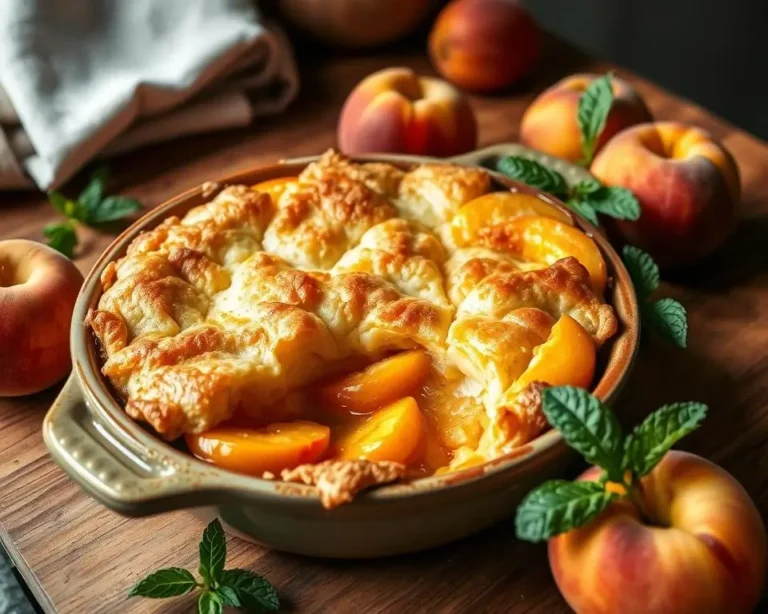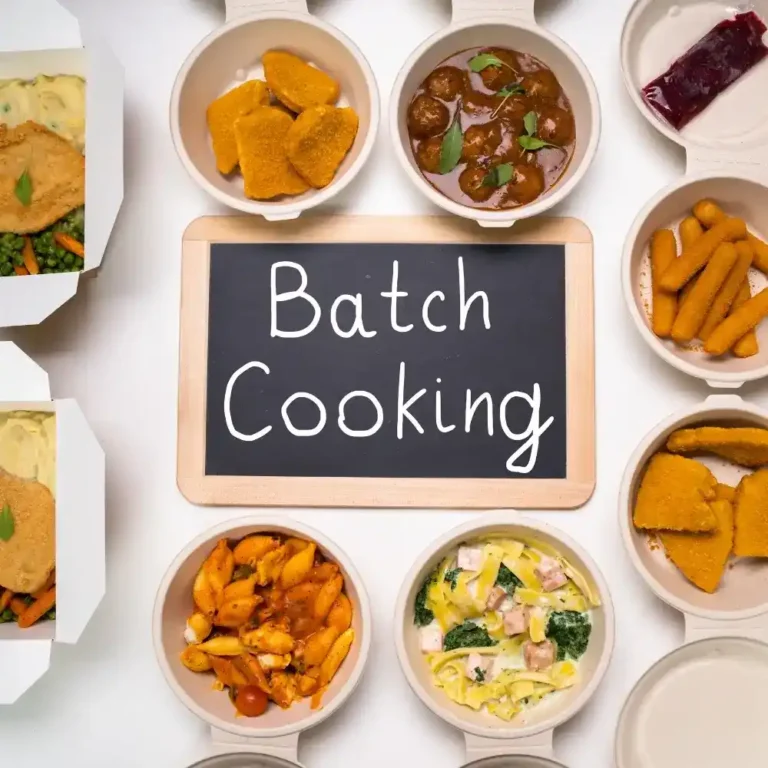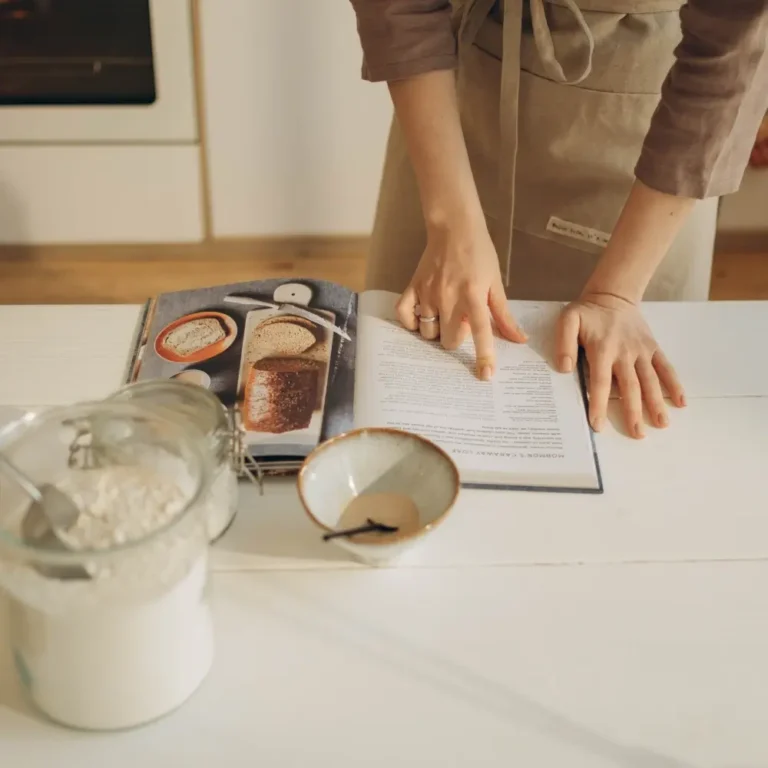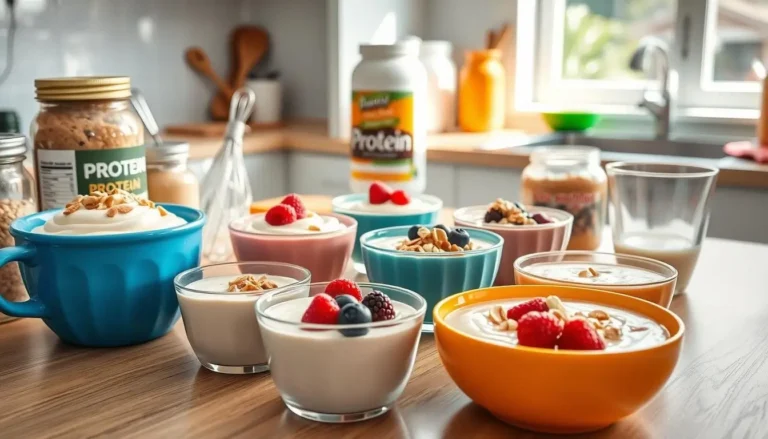Handle Food Safely
Introduction
Handle Food Safely: Ensuring kitchen safety is crucial to prevent foodborne illnesses and maintain a healthy cooking environment. The way you handle food directly impacts the well-being of those consuming it, making it essential to follow proper procedures in food handling. From washing your hands to ensuring safe storage practices, small changes can make a big difference in reducing the risk of contamination. Adopting food safety guidelines will not only protect your family and guests but will also help in preserving the flavor and nutritional value of your meals.
By following the FDA Food Safety guidelines and learning the 5 ways of handling food for safety, you can significantly improve your ability to handle food safely. The guidelines emphasize critical practices such as maintaining clean surfaces, cooking foods to safe temperatures, and separating raw from cooked items. These steps, along with examples of food handling such as proper meat storage or washing produce thoroughly, are essential for keeping foodborne pathogens at bay. When you handle food safely, you are not only safeguarding your health but also enhancing the quality of your meals. By following these proven practices, you contribute to a safer kitchen and a more enjoyable cooking experience.
Food safety rules in the kitchen are crucial for maintaining a healthy cooking environment and cannot be overlooked. Properly handling food ensures that your kitchen stays clean and organized while preventing cross-contamination and foodborne illnesses. For example, regularly sanitizing countertops and using separate utensils for raw meats can prevent harmful bacteria from spreading. Additionally, by adhering to essential food safety practices, you handle food safely and promote better hygiene in the kitchen. Make it a habit to prioritize food safety rules, and you will have a safer space where delicious meals are prepared without concern..
Table of Contents
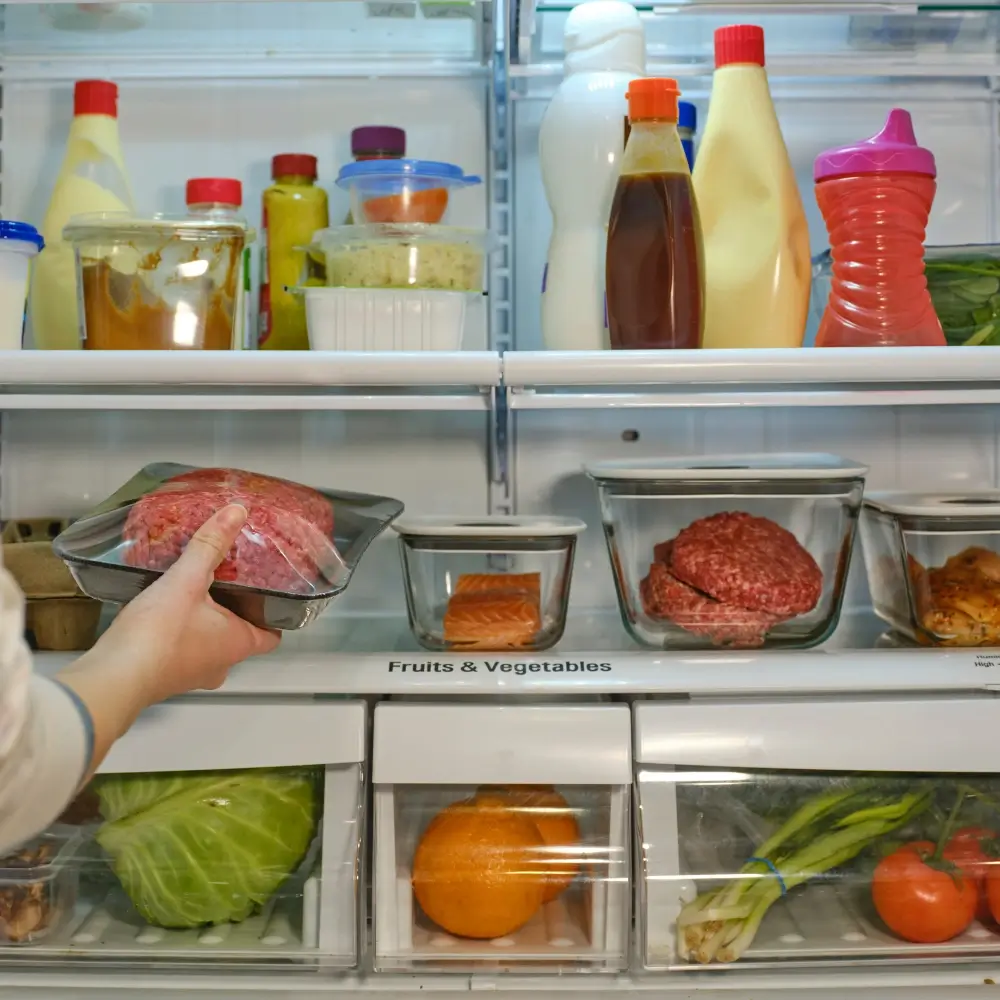
Why Handle Food Safely?
The Importance of Handle Food Safely in Preventing Illness
Foodborne illnesses can be caused by harmful bacteria, viruses, and parasites that develop when food is not properly handled. These pathogens can multiply rapidly in improperly stored, prepared, or cooked foods, posing a serious risk to health. By learning how to handle food safely, you can significantly reduce the chances of contamination. Proper food handling includes following safety protocols for washing hands, maintaining clean surfaces, and ensuring foods are cooked to the correct temperature. Consistently handling food with care is vital in protecting you and your loved ones from the harmful effects of foodborne diseases. By prioritizing safe food handling practices, you not only keep your kitchen cleaner but also safeguard everyone who enjoys your meals.
Handle Food Safely to Protect Your Food Health
One of the most critical reasons for practicing safe food handling is to protect your health. By following key food safety rules, such as washing hands regularly, keeping raw and cooked foods separate, and cooking foods to the right temperatures, you drastically reduce the chances of contracting foodborne illnesses. These measures are essential in preventing harmful bacteria and pathogens from contaminating your meals.
The FDA Food Safety guidelines outline steps for reducing contamination risks at every stage, from preparation to serving, giving you the tools you need to handle food safely. With a little effort and attention to detail, you can ensure your kitchen remains a safe environment for everyone in your household. By adopting these practices, you’ll enjoy not only safe but also healthier and more flavorful meals.
Handle Food Safely Improves Flavor and Quality
Proper food handling plays an important role in maintaining the freshness, flavor, and overall quality of your ingredients. When ingredients like fruits, vegetables, and meats are stored and prepared correctly, their natural taste and texture are preserved. Safe food handling practices, such as proper storage and temperature control, help retain the food’s inherent quality while reducing the risk of contamination. Additionally, by following these practices, you ensure that the nutritional value of food is not compromised.
For example, keeping produce refrigerated and avoiding overcooking can help retain its flavor and nutrients, ensuring that every dish you prepare is not only delicious but also healthy. Handling food safely is key to making the most of your ingredients, allowing you to create meals that are both flavorful and nutritious.
Promote Kitchen Hygiene for a Safe Cooking Environment
A clean kitchen is a key component of food safety. Maintaining proper hygiene in the kitchen not only makes the space more pleasant but also ensures that food preparation areas are free from contaminants that could lead to foodborne illnesses. Wiping down countertops, washing cutting boards and utensils between uses, and properly disposing of food scraps are all essential steps in keeping your kitchen hygienic. Regularly sanitizing surfaces such as sinks, countertops, and appliance handles helps prevent cross-contamination, reducing the risk of harmful pathogens being transferred to your meals. By prioritizing cleanliness and following safe food handling procedures, you create a cooking environment where food safety can thrive, ensuring that every meal is prepared with care and caution.
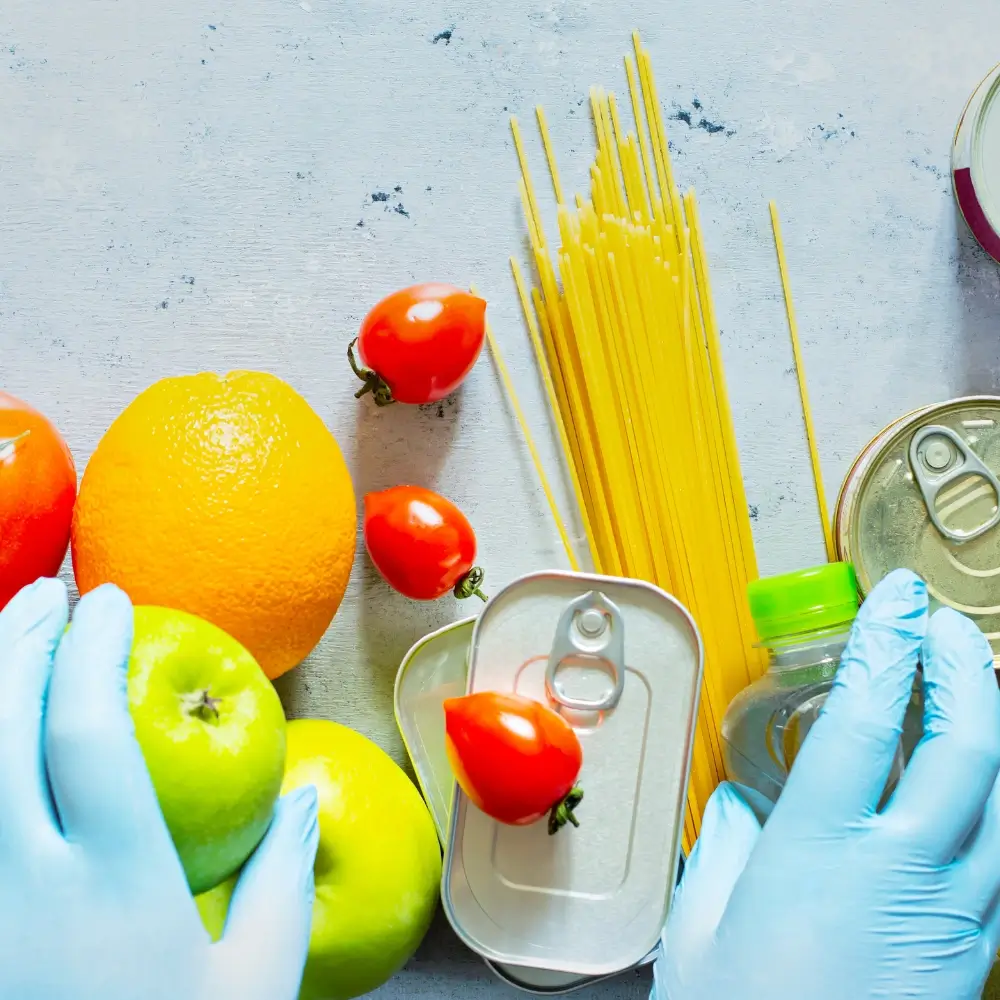
Key Practices for Safe Food Handling
Ensuring safe food handling is essential in reducing the risk of foodborne illnesses. By practicing safe food handling techniques, such as washing hands before and after handling food, you create a safer cooking environment. These practices help prevent harmful bacteria from spreading and contaminating your meals. Additionally, keeping raw and cooked foods separate and following proper storage guidelines further contributes to food safety. These simple yet effective steps are critical in maintaining a clean and healthy kitchen environment.
Each step in the process, from washing your hands to avoiding cross-contamination, plays a crucial role in food safety. The FDA Food Safety guidelines emphasize the importance of safe food handling in protecting you and your family from foodborne pathogens. By adopting these practices, you ensure that the food you prepare is not only safe but also fresh and of the highest quality. Prioritizing food safety at every stage of meal preparation helps ensure the well-being of everyone in your household.
Wash Your Hands
Washing your hands properly is one of the most effective ways to prevent foodborne illnesses. Hands should be washed thoroughly with soap and warm water for at least 20 seconds before and after handling food, especially raw ingredients like meat, poultry, and eggs. This removes harmful bacteria that may be transferred onto your hands during food preparation. It’s equally important to wash your hands after touching surfaces, using the restroom, or handling pets, as these activities can introduce contaminants to your food. Practicing good hand hygiene not only reduces the risk of foodborne illness but also promotes a clean cooking environment.
Use Separate Cutting Boards
Cross-contamination is a leading cause of foodborne illnesses, and using separate cutting boards is a simple yet effective way to prevent this. Designating one cutting board for raw meat, poultry, and seafood, another for fruits and vegetables, and a third for ready-to-eat foods will reduce the risk of harmful bacteria spreading between different food types. Color-coding your cutting boards can help you easily identify which one to use for each food group, making it even easier to follow proper handling practices. Be sure to regularly wash and sanitize your cutting boards to maintain cleanliness and prevent bacterial growth. Properly managing these basic tasks ensures that your food preparation remains safe from contamination.
Store Food Properly
Proper food storage is essential for preserving freshness and preventing bacterial growth. Perishable items like meats, dairy products, and eggs should always be stored in the refrigerator at a temperature of 40°F (4°C) or lower. This slows down the growth of bacteria and keeps your food fresh for longer. For dry or canned goods, ensure they are kept in cool, dry places away from direct sunlight. Labeling and dating containers, especially leftovers, helps you keep track of how long the food has been stored and ensures you consume it within safe time frames. Proper food storage helps maintain the integrity of your ingredients and reduces waste, which is beneficial both for your health and your budget.
Cook Food Thoroughly
Cooking food to the proper temperature is essential for killing harmful bacteria and ensuring the safety of your meals. A food thermometer is an invaluable tool in achieving this, especially for meats and poultry. Poultry, such as chicken or turkey, should reach an internal temperature of at least 165°F (74°C), while ground meats, including beef and pork, should be cooked to a minimum of 160°F (71°C). For seafood and eggs, ensure they are cooked thoroughly to eliminate any harmful pathogens that may be present. By following these temperature guidelines, you guarantee that the food you serve is not only safe to eat but also delicious.
Avoid Cross-Contamination
Cross-contamination occurs when harmful bacteria are transferred from one food item to another, and it is one of the main causes of foodborne illnesses. To prevent this, always use clean utensils, plates, and cutting boards when handling different types of food. Never place cooked food on a plate that previously held raw meat or poultry without first washing it. Pay attention to how you handle food during preparation; avoid touching your face, hair, or other surfaces that could contaminate your hands. These simple precautions help keep your kitchen safe and reduce the risk of spreading harmful bacteria to ready-to-eat foods.
Regularly Clean Surfaces
A clean kitchen is essential for preventing foodborne illness, and regularly cleaning surfaces is one of the best ways to ensure food safety. Wipe down counters, cutting boards, and utensils with hot, soapy water before and after food preparation to remove any lingering bacteria. Additionally, using disinfectant wipes or sprays designed for food preparation surfaces can help sanitize and kill harmful microorganisms that might be present. By consistently maintaining a clean kitchen, you reduce the chance of cross-contamination and create a safe environment for preparing meals. Ensuring a clean kitchen is one of the most effective steps in promoting food safety and protecting your health.
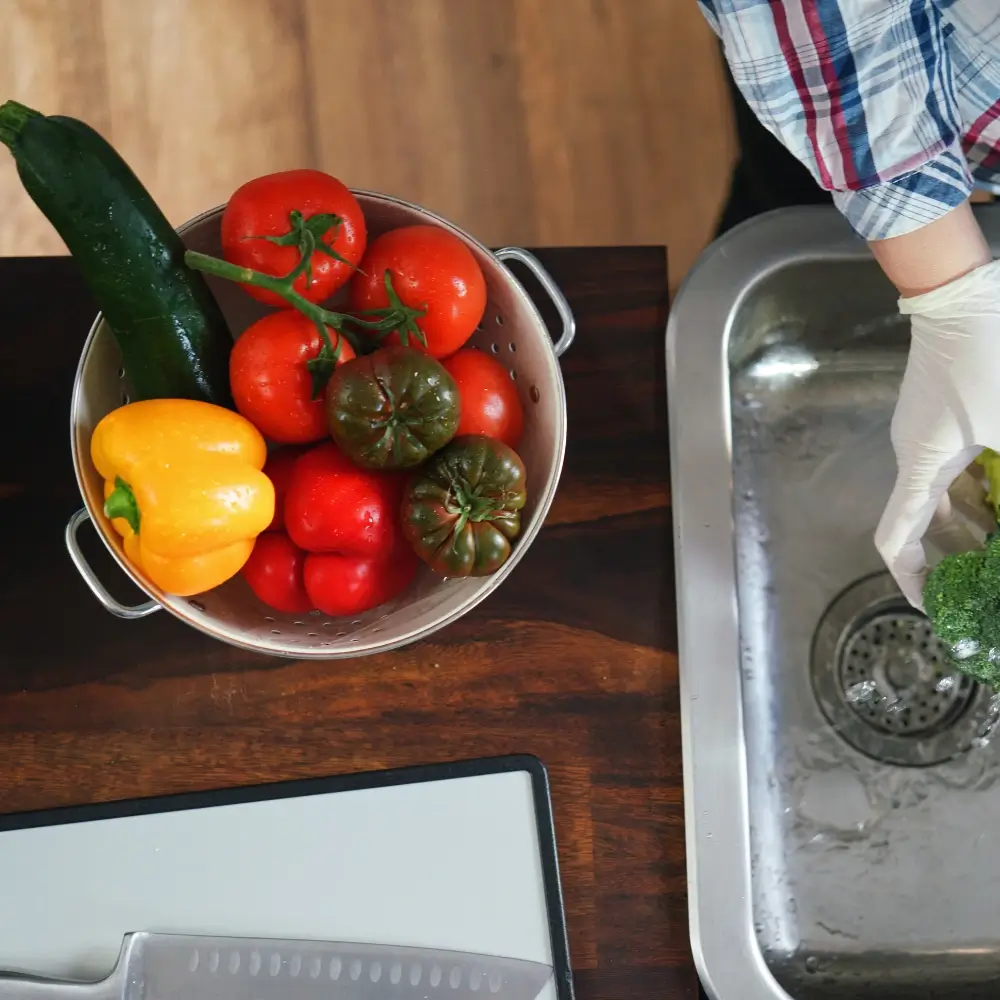
General Tips for Handle Food Safely
Ensuring that food is handled safely is a responsibility shared by everyone in the kitchen. Whether preparing meals at home or in a professional environment, adhering to food safety rules is essential in preventing foodborne illnesses. By practicing safe food handling techniques, such as washing hands and keeping surfaces clean, you minimize the risk of contamination. Safe food handling not only protects health but also ensures that the food served is safe to eat, fresh, and flavorful. These steps, when followed consistently, provide a strong foundation for maintaining a safe kitchen environment.
With the proper precautions and a focus on cleanliness, you can significantly reduce the risk of contamination. Safe food handling involves more than just cleaning hands, it also includes using separate cutting boards, storing food at the correct temperatures, and cooking to safe internal temperatures. These practices are critical in ensuring that harmful bacteria and pathogens don’t make their way into your meals. By following these general tips and being vigilant about food safety, you can create a kitchen that is safe, organized, and conducive to preparing healthy, delicious meals for everyone.
Educate Family Members
Educating family members on safe food handling practices is one of the most important steps you can take to ensure food safety in your home. Teach everyone in your household about the importance of washing their hands, using separate cutting boards, and cooking food to the proper temperature. Encourage them to regularly clean surfaces and utensils after each use, and emphasize the importance of not leaving perishable foods out at room temperature for extended periods. By fostering a culture of food safety, you not only reduce the risk of foodborne illnesses but also create a more organized and hygienic kitchen environment. Involving the entire family in food safety practices ensures that everyone contributes to maintaining a safe cooking space.
Check for Expired Food
Regularly checking your kitchen for expired food items is essential for preventing the consumption of unsafe ingredients. Food that is past its expiration date can harbor harmful bacteria, molds, or other contaminants that could make you sick. It is crucial to inspect pantry staples, refrigerated items, and frozen foods periodically to ensure they are still safe to eat. Labeling items with the purchase or expiration date can help you keep track of their freshness. Discarding expired food items reduces the risk of consuming spoiled products and helps maintain an organized, hygienic kitchen where only safe, fresh ingredients are used for cooking.
Avoid Cross-Contamination in the Refrigerator
Another critical aspect of handling food safely is ensuring that cross-contamination does not occur inside your refrigerator. Store raw meats, poultry, and seafood on the bottom shelf in separate containers to prevent juices from dripping onto ready-to-eat foods like fruits, vegetables, or dairy. Keep dairy products in their original packaging or airtight containers to prevent exposure to contaminants. Regularly clean the refrigerator, especially the shelves and drawers where raw foods are stored, to avoid any build-up of bacteria. By practicing proper food storage, you can ensure that your refrigerator remains a safe environment for all food items.
Practice Safe Defrosting
Thawing frozen food safely is just as important as the cooking process itself. To prevent harmful bacteria from growing, always thaw frozen foods in the refrigerator, never on the countertop. If you’re in a hurry, you can defrost food in the microwave, but be sure to cook it immediately afterward. Avoid leaving frozen foods at room temperature for extended periods, as this can allow bacteria to multiply quickly. Safe defrosting practices ensure that the food you prepare remains safe to eat while maintaining its quality and flavor.
Properly Store Leftovers
Leftovers are a convenient way to reduce food waste, but they must be handled properly to avoid foodborne illnesses. Always store leftovers in airtight containers and refrigerate them as soon as possible after cooking, preferably within two hours of preparation. Be sure to label and date leftovers so that you can track how long they’ve been stored. When reheating leftovers, make sure they are heated to the appropriate internal temperature, typically 165°F (74°C), to kill any bacteria that may have grown during storage. Storing leftovers properly helps you reduce waste while keeping your meals safe and fresh.
Keep a Clean Kitchen
A clean kitchen is essential for handling food safely. Regularly wipe down countertops, cabinets, and drawers to prevent bacteria buildup. Clean dishes, utensils, and cooking tools promptly after use to avoid cross-contamination. It’s also a good idea to sanitize high-touch surfaces like faucet handles, knobs, and light switches to prevent any bacteria from transferring to your food. A clean kitchen not only promotes food safety but also enhances the overall cooking experience by creating a more pleasant and organized environment. Prioritize cleanliness as a foundational element of food safety to protect your health and the health of your family.
Be Aware of Food Safety Rules in the Kitchen
Understanding and following food safety rules in the kitchen is crucial for both preventing contamination and ensuring the quality of your meals. Some basic rules include keeping hot foods hot and cold foods cold, avoiding temperature danger zones where bacteria thrive, and using different utensils for different types of food. For instance, always use separate knives, forks, and plates for raw and cooked foods to minimize cross-contamination. Additionally, remember to frequently check the cleanliness of your kitchen and to adhere to safe practices recommended by organizations like the FDA. By integrating these food safety rules into your daily kitchen routine, you can ensure that the food you prepare is both safe and healthy.
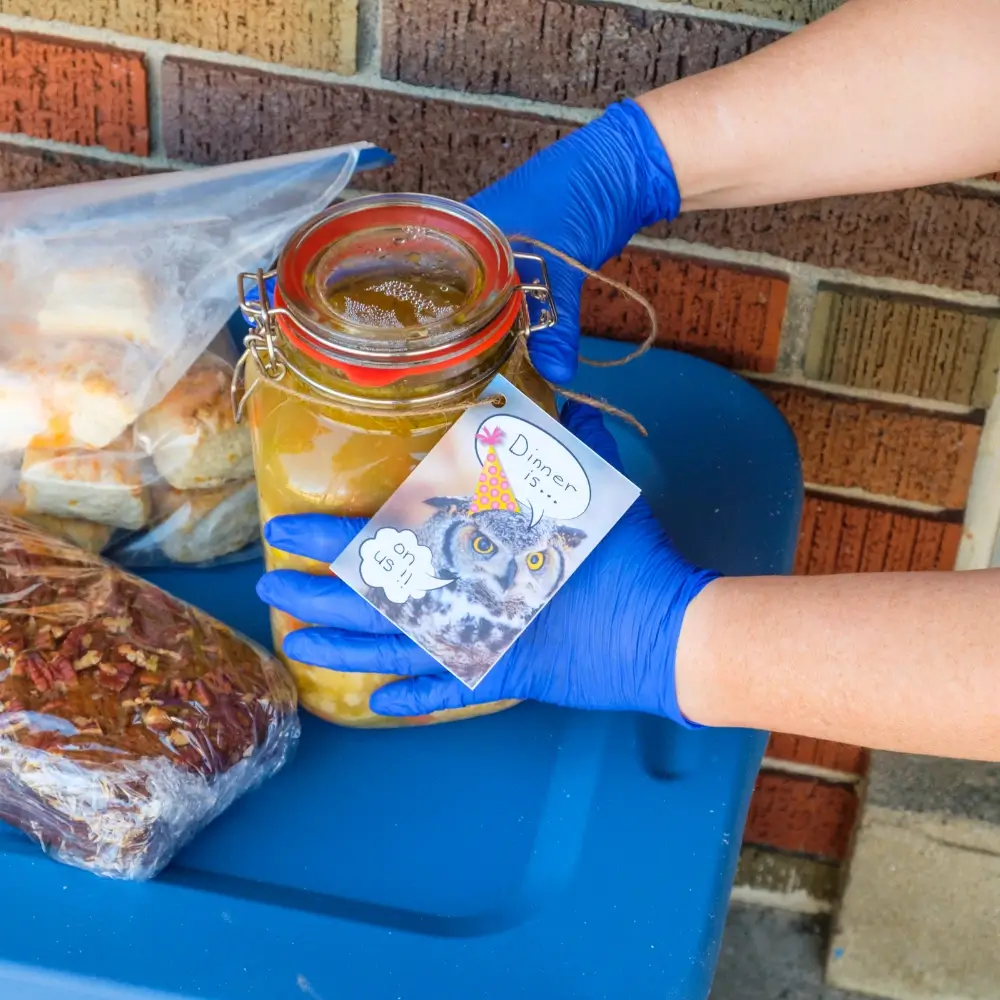
Conclusion
Handling food safely is crucial to preventing foodborne illnesses and ensuring that the food you prepare is both delicious and safe to eat. By incorporating essential practices like washing your hands, using separate cutting boards for different food types, and storing food at the proper temperatures, you can reduce the risks associated with improper food handling. These simple yet effective measures help maintain a safe cooking environment and protect the health of you and your family.
In addition to proper food storage and hygiene, it’s important to cook food thoroughly and avoid cross-contamination. Using food thermometers, separating raw from cooked foods, and regularly cleaning kitchen surfaces are all steps that further enhance food safety. Taking the time to follow these practices will not only reduce the chances of illness but also improve the quality and taste of your meals. A little extra care in handling your ingredients goes a long way in creating safe, flavorful dishes.
Ultimately, prioritizing food safety in your kitchen is essential for creating a safe and healthy cooking environment. When you make food handling a habit, you ensure that each meal is prepared with care, and you can enjoy your time in the kitchen with confidence. By following these simple steps, you can cook wholesome meals without worrying about contamination or foodborne illnesses.
FAQ
What are the 5 safe food handling procedures?
To handle food safely, it is crucial to follow five key procedures: First, wash your hands thoroughly with soap and water before and after handling food. Second, avoid cross-contamination by using separate cutting boards and utensils for raw meats and ready-to-eat foods. Third, store food properly by keeping perishable items at the correct temperature, typically in a refrigerator at 40°F (4°C). Fourth, cook food to the recommended internal temperatures to ensure it’s safe to eat. Lastly, regularly clean your kitchen surfaces and utensils to eliminate bacteria and germs. Following these food safety procedures ensures that your meals are both safe and delicious, reducing the risk of foodborne illnesses.
Why is it important to handle food safely?
Handling food safely is essential to prevent the growth of harmful bacteria and pathogens that can lead to foodborne illnesses. Proper food handling not only protects your health but also ensures that your meals are safe to consume. By using techniques like washing hands, using separate cutting boards for different food types, and storing food at correct temperatures, you minimize contamination risks. Adopting these practices will also preserve the flavor and nutritional value of your food, making meals more enjoyable and healthier for you and your family. Prioritizing food safety allows you to maintain a clean and hygienic cooking environment, supporting overall well-being.
How do you hold food safely?
To handle food safely, it is important to take extra precautions to prevent contamination during food preparation and storage. When holding food, always ensure it is kept at safe temperatures—cold food should be kept below 40°F (4°C), while hot foods should be maintained at 140°F (60°C) or higher. Avoid leaving perishable items out at room temperature for extended periods, as this encourages bacterial growth. Additionally, always use clean hands, utensils, and plates to handle food and avoid touching your face or other surfaces that could contaminate the food. Safe food handling practices ensure that food stays fresh and free from harmful pathogens.
What is a healthy way of handling food?
A healthy way of handling food revolves around proper hygiene and temperature control to prevent the growth of bacteria and pathogens. Always wash your hands with soap and water before and after food preparation, especially after handling raw meat or eggs. Use separate cutting boards for raw and ready-to-eat foods to avoid cross-contamination. Ensure food is cooked to the correct internal temperature, and store leftovers promptly in airtight containers. Keeping your kitchen clean by disinfecting countertops, cutting boards, and utensils after each use is also critical. By following these safe food handling procedures, you maintain food safety and promote healthier meals for yourself and your family.
How to handle food safety?
Handling food safety effectively involves several key practices that minimize the risk of contamination and foodborne illnesses. Always wash your hands with warm, soapy water before and after touching food, especially raw meat and eggs. Use separate cutting boards and utensils for raw and ready-to-eat foods, and keep them clean at all times. Store perishable items in the refrigerator at safe temperatures and cook food thoroughly to the recommended internal temperatures. Regularly clean and sanitize your kitchen surfaces and utensils to eliminate germs and bacteria. These food safety steps are essential for ensuring the health and safety of everyone who enjoys your meals.
What are 4 types of food safety?
There are four main types of food safety that should be followed to reduce the risk of foodborne illness: physical safety, chemical safety, biological safety, and allergen safety. Physical safety involves preventing contamination from foreign objects such as glass or plastic in food. Chemical safety focuses on avoiding harmful chemicals, such as pesticides or cleaning agents, from contaminating food. Biological safety ensures that harmful bacteria, viruses, and parasites are kept away through proper food handling and cooking. Allergen safety is crucial for individuals with food allergies, ensuring that foods are properly labeled and cross-contamination is prevented. Following these four key aspects of food safety helps create a safe and healthy environment for food preparation.
What are some food safety rules?
Some essential food safety rules include: wash your hands thoroughly before and after handling food, especially after touching raw meat or poultry. Always use separate cutting boards for raw and ready-to-eat foods to avoid cross-contamination. Store perishable food in the refrigerator or freezer at safe temperatures to prevent bacterial growth. Cook meat, poultry, and seafood to the recommended internal temperature to kill harmful bacteria. Regularly clean your kitchen, including countertops, utensils, and cutting boards, to ensure a hygienic food preparation environment. By following these food safety rules, you reduce the risk of foodborne illness and maintain a safe kitchen for cooking and dining.
